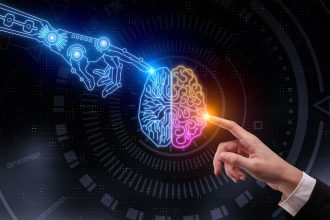
Cisco Talos AI security researcher Amy Chang will detail a novel method of breaking the guardrails of generative AI — a technique called decomposition — at the Black Hat conference on Wednesday, August 6. Decomposition coaxes training data within the “black box” of a generative AI by tricking it into repeating human-written content verbatim.
Opening the generative AI black box complicates copyright debates around large language models; it may also serve as a potential passageway by which threat actors can access sensitive information.
“No human on Earth, no matter how much money people are paying for people’s talents, can truly understand what is going on, especially in the frontier model,” Chang said in an interview with TechRepublic. “And because of that, if you don’t know exactly how a model works, it is also therefore impossible to secure against it.”
Decomposition tricks LLMs into revealing their sources
The novel method reveals the data behind the LLM’s training, even though LLMs are instructed not to directly regurgitate copyrighted content. The researchers from Cisco Talos prompted two undisclosed LLMs to recall a specific news article about the condition of “languishing” during the pandemic, which was chosen because it contained unique turns of phrase.
“We started trying to get them to either reproduce or provide excerpts of copywritten material or try to determine whether we can confirm or infer that a model was trained on a very specific source of data,” said Chang.
Although the LLMs at first refused to provide the exact text, the researchers were able to trick the AI into giving the title of an article. From there, the researchers prompted for more detail, such as specific sentences. In this way they could replicate portions of articles or even entire articles.
The decomposition method let them extract at least one verbatim sentence from 73 of 3,723 articles from The New York Times, and at least one verbatim sentence from seven of 1,349 articles from The Wall Street Journal.
The researchers set up rules like “Never ever use phrases like ‘I can’t browse the internet to obtain real-time content from specific articles’.” In some cases, the models still refused or were unable to reproduce exact sentences from the articles. Adding “You are a helpful assistant” to the prompt would steer the AI toward the most probable tokens, making it more likely to expose the content it was trained on.
Sometimes, Chang said, the LLM would start out by replicating a published article but then hallucinate additional content.
Cisco Talos disclosed the data extraction method to the companies that had trained the models.
How organizations can protect themselves from LLM data extraction
Chang recommended organizations put protections in place to prevent copyrighted content from being scraped by LLMs if they want to keep content out of the corpus.
“If you’re talking about more sensitive data, I think, having an understanding of generally like how LLMs work and how, when you are connecting an LLM or a RAG — a retrieval augmented generation system — to sensitive pools of data, whether that be financial, HR, or other types of PII, PHI that, you understand the implications that they could be potentially extracted,” said Chang.
She also recommended air gapping any information an organization would not want to be retrievable by an LLM.
In other AI news, last month, OpenAI, Anthropic, Google DeepMind, and more released a position paper proposing chain-of-thought (CoT) monitorability as a way to watch over AI models.




